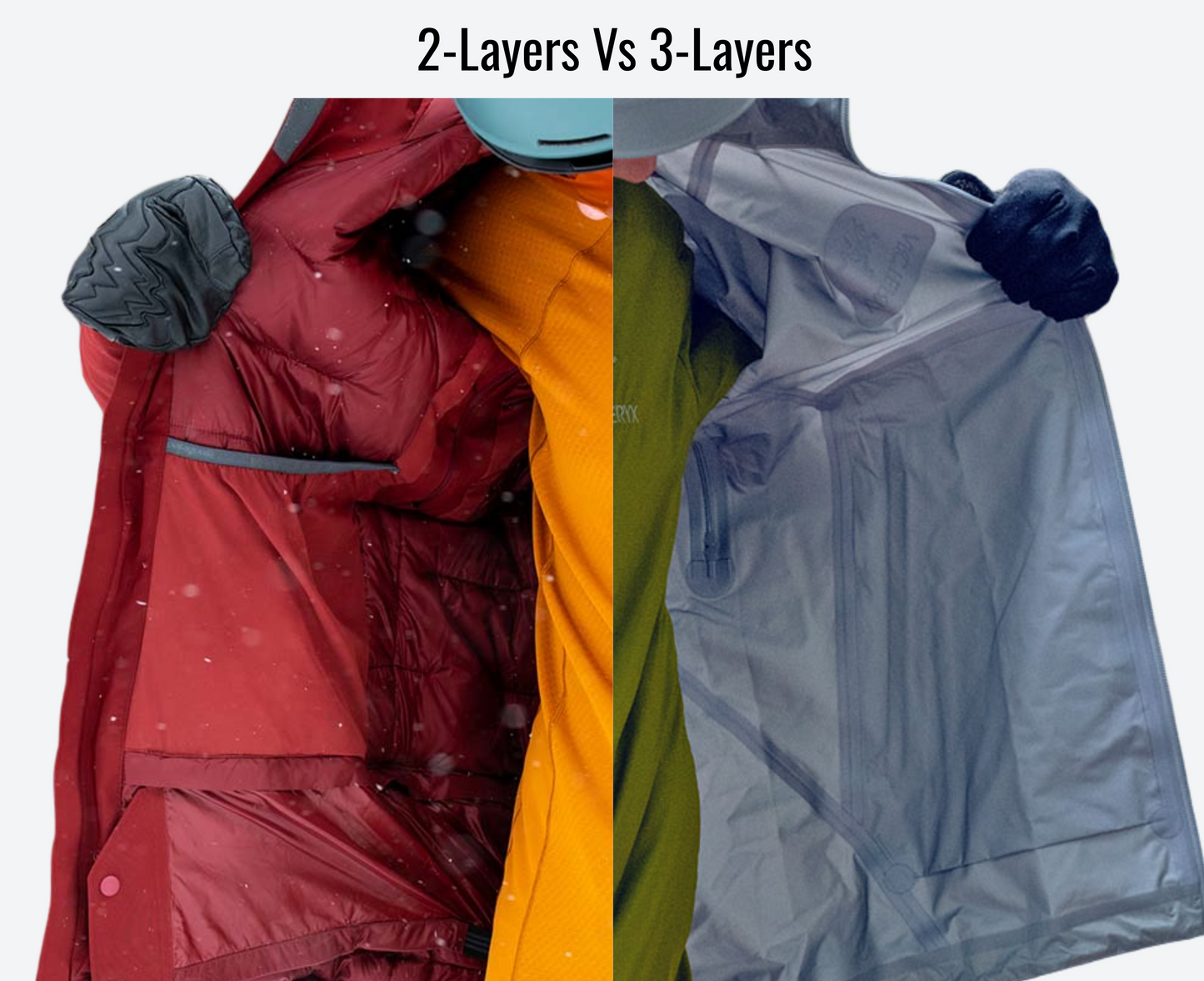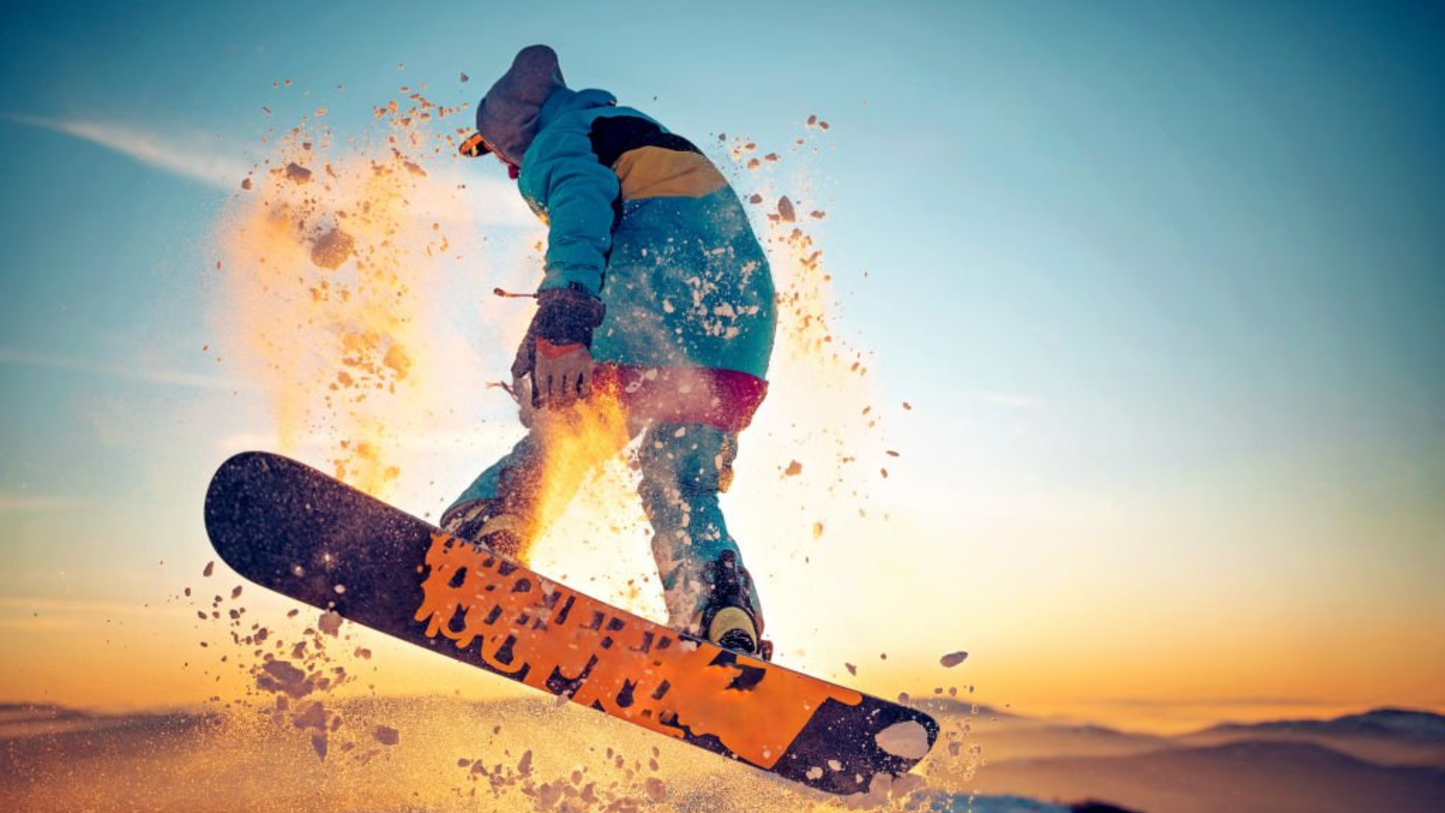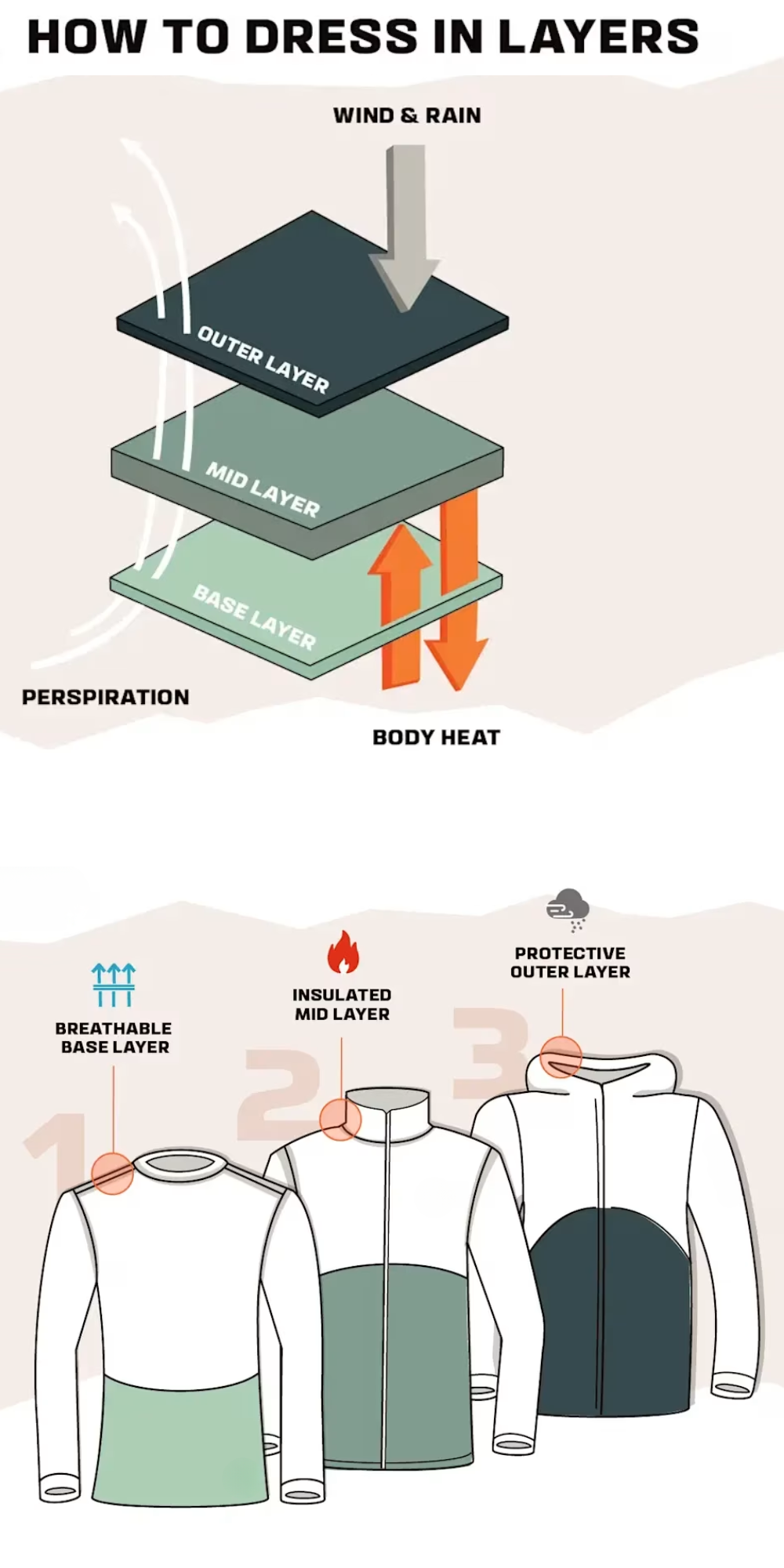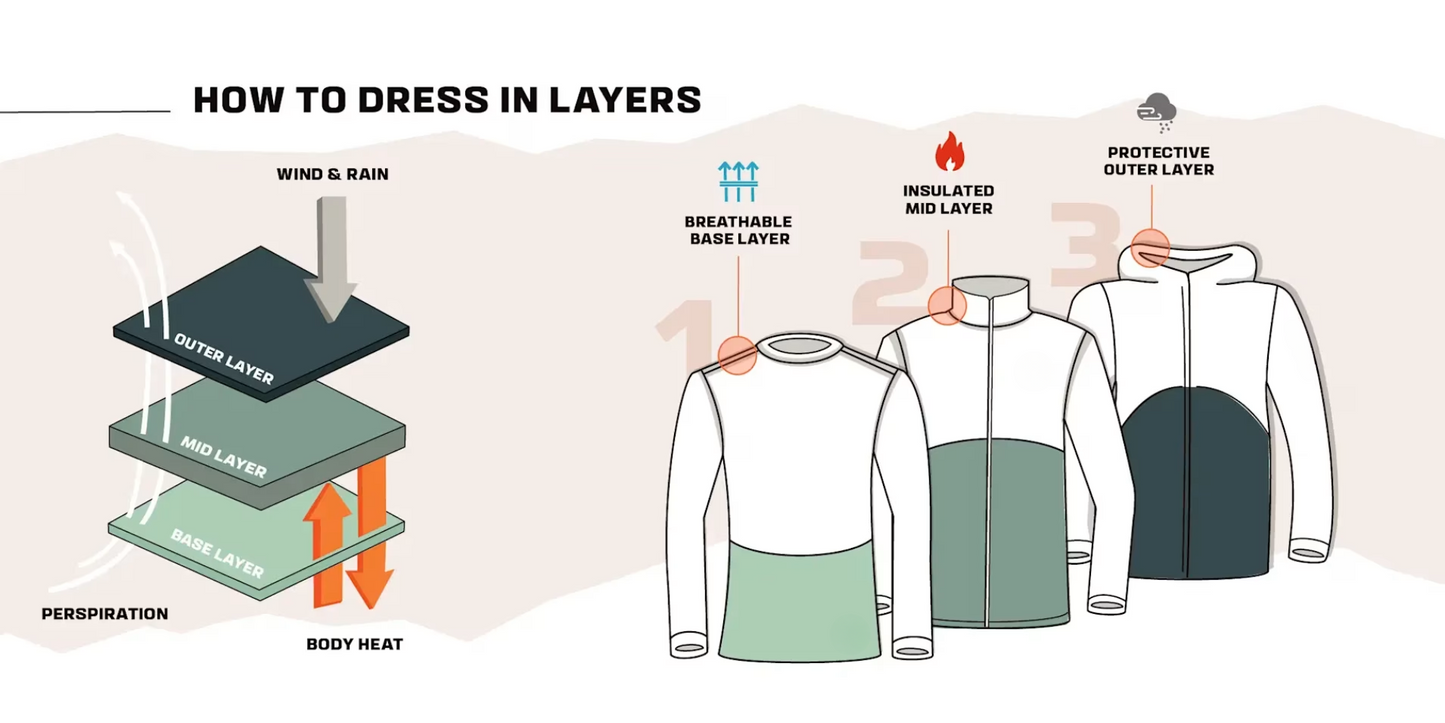
Chill Motion 2L Pantalons de Neige
€139,99 EUR
Prix régulier €89,99 EUR| Matériau | Tissu polyester 2L avec traitement DWR, doublure en polyester |
| Indice d'étanchéité | 15 000 mm |
| Respirabilité | 10 000 g/m²/24h |
| Isolation | Coton |
| Poids (Veste) | Environ 1000 g |
| Poids (Pantalon) | Environ 800 g |
| Ajustement | Détendu |
| Meilleur pour | Planche à neige, ski, activités en plein air par temps froid |
| Durabilité | Résistance à l'abrasion > 200 000 cycles |
| Autres caractéristiques | Jupe Neige, Ventilation Sous-les-Aisselles & Aisselles-intérieures, Manches Réglables, Poches de Stockage, Poche pour Carte de Ski |
| Matériau | Tissu polyester 2L avec traitement DWR, doublure en polyester |
| Indice d'étanchéité | 15 000 mm |
| Respirabilité | 10 000 g/m²/24h |
| Isolation | Coton |
| Poids (Veste) | Environ 1000 g |
| Poids (Pantalon) | Environ 800 g |
| Ajustement | Détendu |
| Meilleur pour | Planche à neige, ski, activités en plein air par temps froid |
| Durabilité | Résistance à l'abrasion > 200 000 cycles |
| Autres caractéristiques | Jupe Neige, Ventilation Sous-les-Aisselles & Aisselles-intérieures, Manches Réglables, Poches de Stockage, Poche pour Carte de Ski |
€139,99 EUR
Prix régulier €89,99 EUR| Matériau | Tissu polyester 2L avec traitement DWR, doublure en polyester |
| Indice d'étanchéité | 15 000 mm |
| Respirabilité | 10 000 g/m²/24h |
| Isolation | Coton |
| Poids (Veste) | Environ 1000 g |
| Poids (Pantalon) | Environ 800 g |
| Ajustement | Détendu |
| Meilleur pour | Planche à neige, ski, activités en plein air par temps froid |
| Durabilité | Résistance à l'abrasion > 200 000 cycles |
| Autres caractéristiques | Jupe Neige, Ventilation Sous-les-Aisselles & Aisselles-intérieures, Manches Réglables, Poches de Stockage, Poche pour Carte de Ski |
| Matériau | Tissu polyester 2L avec traitement DWR, doublure en polyester |
| Indice d'étanchéité | 15 000 mm |
| Respirabilité | 10 000 g/m²/24h |
| Isolation | Coton |
| Poids (Veste) | Environ 1000 g |
| Poids (Pantalon) | Environ 800 g |
| Ajustement | Détendu |
| Meilleur pour | Planche à neige, ski, activités en plein air par temps froid |
| Durabilité | Résistance à l'abrasion > 200 000 cycles |
| Autres caractéristiques | Jupe Neige, Ventilation Sous-les-Aisselles & Aisselles-intérieures, Manches Réglables, Poches de Stockage, Poche pour Carte de Ski |
Why You'll Love It
Techs
Détails

2L or 3L? What's the Difference?
Discover the difference between 2-layer and 3-layer designs with ChillCarve. Choose the perfect balance of durability and comfort for your needs.
2L and 3L refer to the number of structural layers in the outermost part of a snow jacket. The main difference lies in whether there is a third inner layer tightly bonded to the second breathable membrane. This affects breathability, durability, weight, and comfort.
Compare the Fabric
| Critères de comparaison | Tissu 2L | Tissu 3L |
|---|---|---|
| Définition des couches | 2L et 3L se réfèrent aux couches du tissu extérieur, pas au vêtement entier. Ils définissent la construction du tissu et influencent l'étanchéité, la respirabilité, la durabilité et le confort. | |
| Couche 1 : Couche externe | ✔️ | ✔️ |
| Couche 2 : Membrane | ✔️ | ✔️ |
| Couche 3 : Doublure | ✖️ | ✔️ |
| Imperméabilité | ★★★★☆ | ★★★★★ |
| Respirabilité | ★★★☆☆ | ★★★★★ |
| Durabilité | ★★★☆☆ | ★★★★★ |
| Poids | ★★★☆☆ | ★★★★★ |
| Confort | ★★★★★ | ★★★★☆ |
| Prix | ★★★★★ (Meilleur choix économique) | ★★★☆☆ (Cher mais vaut le coût) |
| Meilleurs cas d'utilisation | Ski de loisir & de station, activités de plein air générales | Hors-piste, alpinisme, conditions extrêmes |
How to Choose Your Perfect Ones?
We highly recommend that you choose the right snow clothing for your needs and don't just stick to the parameters!
Water resistance is measured in millimetres (e.g., 8,000mm, 20,000mm) – higher numbers don’t always mean better performance.
- Beginner/resort skiing (gentle slopes, dry snow): 8,000-1,000mm is sufficient for light snowfalls.
- Multi-day trips/wet snow regions: Aim for 10,000-15,000mm with fully sealed seams.
- Backcountry/storm conditions: 20,000mm+ for heavy snow or rain.
Pro tip: Most resort skiers don’t need max waterproof ratings – proper seam sealing matters more than chasing numbers.
Waterproof Ratings: Know Your Weather
Water resistance is measured in millimetres (e.g., 8,000mm, 20,000mm) – higher numbers don’t always mean better performance.
- Beginner/resort skiing (gentle slopes, dry snow): 8,000-1,000mm is sufficient for light snowfalls.
- Multi-day trips/wet snow regions: Aim for 10,000-15,000mm with fully sealed seams.
- Backcountry/storm conditions: 20,000mm+ for heavy snow or rain.
Pro tip: Most resort skiers don’t need max waterproof ratings – proper seam sealing matters more than chasing numbers.
Balancing waterproofing and airflow prevents sweat buildup:
- Casual skiing: Moderate breathability (5,000-8,000g/m²) works for relaxed runs.
- Intensive skiing (off-piste, moguls): Prioritize high breathability (10,000g/m²+) to avoid overheating.
Key fact: Breathable fabric alone won’t keep you dry—pair it with moisture-wicking base layers.
Respirabilité : Adapter à Votre Niveau d'Effort
Balancing waterproofing and airflow prevents sweat buildup:
- Casual skiing: Moderate breathability (5,000-8,000g/m²) works for relaxed runs.
- Intensive skiing (off-piste, moguls): Prioritize high breathability (10,000g/m²+) to avoid overheating.
Key fact: Breathable fabric alone won’t keep you dry—pair it with moisture-wicking base layers.
Ski jackets themselves don’t provide warmth—insulation comes from mid-layers!
- Thin shell jackets (non-insulated): Ideal for most skiing—add/remove mid-layers as needed.
- Insulated jackets: Suitable for cold (-15°C or below) or low-activity skiing, temperature tolerance depends on the type and thickness of the insulation.
Warmth Strategy: Layer Smartly
Ski jackets themselves don’t provide warmth—insulation comes from mid-layers!
- Thin shell jackets (non-insulated): Ideal for most skiing—add/remove mid-layers as needed.
- Insulated jackets: Suitable for cold (-15°C or below) or low-activity skiing, temperature tolerance depends on the type and thickness of the insulation.
- Mobility-friendly design: Sleeves should cover wrists when stretched forward.
- Weight matters: Under 800g jackets reduce fatigue for active skiers.
- Ventilation zips: Underarm/chest vents help regulate temperature during variable weather.
- Reinforced zones: Look for abrasion-resistant panels on knees, elbows, and seat areas.
- Snow seal: Detachable inner snow skirts keep powder out without restricting movement.
Hidden Essentials
- Mobility-friendly design: Sleeves should cover wrists when stretched forward.
- Weight matters: Under 800g jackets reduce fatigue for active skiers.
- Ventilation zips: Underarm/chest vents help regulate temperature during variable weather.
- Reinforced zones: Look for abrasion-resistant panels on knees, elbows, and seat areas.
- Snow seal: Detachable inner snow skirts keep powder out without restricting movement.
- Weekend resort: Waterproof 8,000mm+, Breathability 6,000g+
- Multi-day alpine tours: Waterproof 15,000mm+, Breathability 10,000g+
- Off-piste/backcountry: Waterproof 20,000mm+, Breathability 12,000g+
Performance par style de ski
- Weekend resort: Waterproof 8,000mm+, Breathability 6,000g+
- Multi-day alpine tours: Waterproof 15,000mm+, Breathability 10,000g+
- Off-piste/backcountry: Waterproof 20,000mm+, Breathability 12,000g+

Three-Layer System
The concept of the three-layer system originated from outdoor activities, designed to help people stay warm and dry in extreme weather conditions. Through a scientific layering approach, the base layer wicks moisture, the mid layer provides insulation, and the outer layer offers wind and water resistance while maintaining breathability. Although initially developed for mountaineering and exploration, this method is now widely used in sports like skiing, ensuring comfort and performance in various environments.





































































































